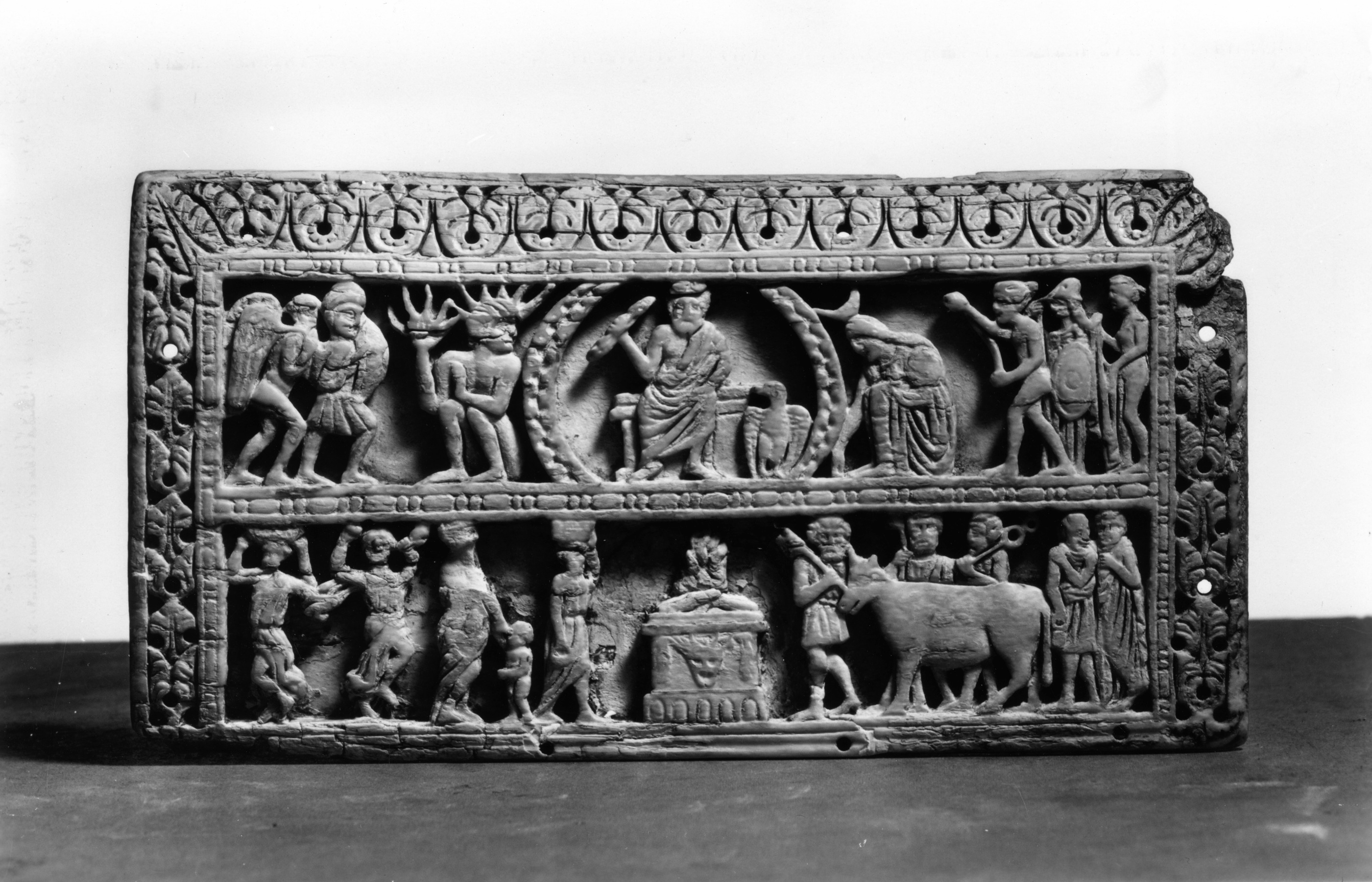Panel with Deities at an Altar
(Roman Empire )
The relief, carved in two tiers in the manner of many later Roman and Christian sarcophagi, shows a sacrifice. Zeus, framed by a medallion, is seated with thunderbolt and eagle. Flanking him are Sol and Luna, identifiable by the sun's rays and the moon's crescent. Victory and a soldier approach from the left, Athena and two nude women from the right. Below, three figures, among them Hermes with his caduceus, lead an ox to sacrifice at the altar; dancers and others bearing gifts or paraphernalia for the sacrifice approach from the other side.
The modeling is crude but the classical subject matter is significant at this relatively late date.
The back of the panel is flat, its lower edge recessed and grooved as if made to fit against the bottom of a box. Attachment holes are visible in the lower grooved border and are concealed in the acanthus leaves along the sides and top. The background of the relief is cut so thin it is translucent; it is damaged in the bottom center and repaired with plaster.
Provenance
Provenance (from the French provenir, 'to come from/forth') is the chronology of the ownership, custody, or location of a historical object. Learn more about provenance at the Walters.
Sambon (?) [date and mode of acquisition unknown]; Henry Walters, Baltimore, 1924, by purchase; Walters Art Museum, 1931, by bequest.
Conservation
| Date | Description | Narrative |
|---|---|---|
| 1/17/1984 | Examination | examined for condition |
Geographies
Roman Empire (Place of Origin)
Measurements
H: 3 11/16 x W: 7 1/16 in. (9.4 x 18 cm)
Credit Line
Acquired by Henry Walters, 1924
Location in Museum
Not on view
Accession Number
In libraries, galleries, museums, and archives, an accession number is a unique identifier assigned to each object in the collection.
In libraries, galleries, museums, and archives, an accession number is a unique identifier assigned to each object in the collection.
71.116




